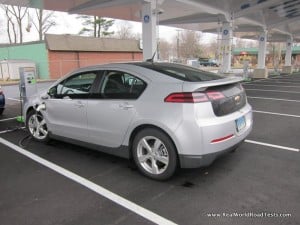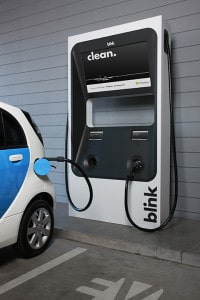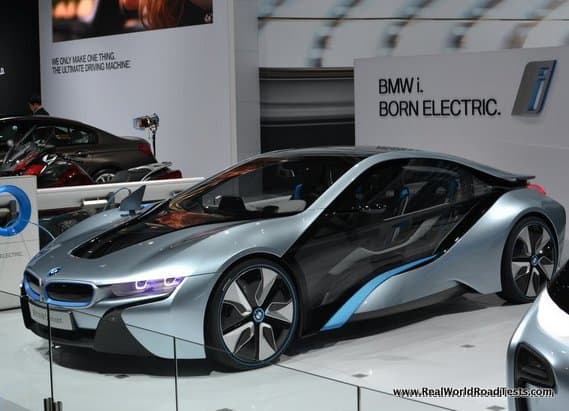It’s election year, so why wouldn’t politicians jump on an easy target to benefit their agendas? Lets face it, life revolves around the all mighty dollar and, in too many cases, greed and power. We as consumers need to peel away the BS and discover for ourselves if electric powered vehicles could make sense for our future as individuals, and the country as a whole. Just like many of you, we had a lot of unanswered questions and really didn’t know what to believe. It’s not a matter of if, but a matter of when alternatives to oil will become absolutely critical.
In these articles, we will begin to uncover the truth about electric powered vehicles. What does it actually cost to own and operate an electric powered vehicle? Are there potential cost savings to owning one? Is it truly environmentally friendly? How easy are they to live with? Even if you currently have no interest in owning an electric vehicle right now, this is something you should become aware of.

To start with, we’ll briefly explain the four categories electric vehicles (EVs) typically fall into:
Hybrid Electric
A hybrid electric vehicle uses a battery-powered electric motor to supplement its traditional gas powered engine. The addition of the electric motor helps to reduce idling and enables the vehicle to operate with zero emissions at low speeds, typically below 40 miles per hour. At higher speeds, the gas powered engine drives the vehicle.
Plug-in Hybrid Electric Vehicles (PHEVs)

A plug-in hybrid vehicle is similar to a standard hybrid in that it combines an electric motor with a traditional gas powered engine. The difference is that it uses a larger battery which can be recharged by plugging the vehicle into an electrical outlet. As a result of this larger battery, the vehicle receives more power from electricity therefore increasing fuel economy.
Battery Electric Vehicles (BEVs)
These vehicles run solely on electricity and have no gas engines, therefore they produce zero tailpipe emissions. As a result of running exclusively on a battery, it is necessary to remain within the vehicle’s range until the next available charge.
Extended-Range Electric Vehicles (ER-EVs)
Extended-range electric vehicles have both an electric motor and a gas powered  generator. The electric motor directly propels the vehicle for the first 25 to 50 miles. After that, the on-board gasoline “generator” provides electricity to the motor. (The gas engine does not actually provide power to the wheels directly, instead it charges the battery which powers the electric motor.) This eliminates the need to drive within a limited range as it can continue to run on gasoline.
generator. The electric motor directly propels the vehicle for the first 25 to 50 miles. After that, the on-board gasoline “generator” provides electricity to the motor. (The gas engine does not actually provide power to the wheels directly, instead it charges the battery which powers the electric motor.) This eliminates the need to drive within a limited range as it can continue to run on gasoline.
Our first EV test vehicle was a Chevy Volt, therefore will make a few references about our experiences with it in this article.
Slow Sales Growth
While there are certainly benefits to purchasing and owning an EV, sales have been fairly weak for several reasons. Even with incentives provided, EVs are still expensive to buy. Just as with many other new technologies, it also takes time to educate consumers and for people to overcome fears of change. But, nowadays, ev fleet management companies seem to be showing interest in adding EVs into the transportation sector, realizing its potential in energy efficiency. This might do some good to the future of EVs. Keep in mind that hybrid electric car sales including the Toyota Prius were less than stellar initially. In January 2002, Toyota reported U.S. Prius sales of 15,556. The cars also suffered from much of the same criticisms that EVs face today. In 2004, Toyota released a completely redesigned second generation which also coincided with gasoline prices rising. In April 2011, Toyota announced that Prius sales in the U.S. reached the million car mark.
Available Incentives to Help Purchase an EV
The cost to design and build EVs are higher for manufacturers since it is still new technology and they do not have the benefit of economies of scale. In order to help entice consumers to make an EV purchase, the Federal Government and many state governments offer incentives. At the time this article was published, the Federal Government incentive for purchasing a new EV ranged from a $2,500 to $7,500 tax credit, depending on the type of EV and your filing status. There are also talks of increasing the Federal tax credit maximum amount to $10,000 and/or providing the credit at the time of purchase versus having to wait until you file your taxes as currently is the case.
A vehicle that has a potential tax credit is often marketed as having a flat tax credit amount, of course advertised as the maximum in the range. In reality, it’s only worth that amount if your total Federal tax bill is as much or more for that fiscal year. In the case of the Volt which is eligible for up to a $7,500 tax credit, if you owe $6,000 in Federal income tax the year you purchase the car you’d receive a $6,000 benefit. The remaining difference can not be applied against the following year’s taxes. If you opt to lease an EV car which qualifies for the incentive, the monetary credit stays with the leasing company who is the actual owner of the vehicle. Don’t worry though, in most cases the tax credit has been factored into the cost of the lease so you are still gaining the benefit.
Many states also offer additional incentives from tax credits, such as Colorado’s credit of up to $6,000, to other forms of incentives such as the state of California offering the sought-after car-pool lane access to EV owners. Knowing the potential incentives available to you can dramatically influence your purchasing decision. To learn more about the current Federal incentives, visit the U.S. Department of Energy’s website in our resource listing at the end of this article.
Government Subsidies
It’s interesting to hear how many people are so against the government subsidizing EVs. Yet, we don’t hear much about how oil production is among the most heavily subsidized businesses in the U.S., despite being a hugely profitable industry. The International Energy Agency estimates that in 2009, governments worldwide spent $300 billion subsidizing fossil fuels. In 2010, that number grew to a staggering $409 billion. The U.S. alone averages approximately $4 billion per year in subsidies to the oil industry. Why doesn’t this receive more attention? The reason is simple. “For the last decade, the oil industry has been one of the most powerful lobbying constituencies in Washington. It has spent nearly a billion dollars on federal lobbying since 1998.” (1) What motivation would there be for affected political leaders to impart a change?
Charging Stations for Electric Vehicles
Level 1 – Most EVs purchased will come standard with a Level 1 charging station which you can simply plug into a standard 110 volt AC house outlet, just as you would a cell phone charger or coffee maker. This type of charger is also often referred to as an “over-night charging station” because of the amount of time it takes to fully charge a depleted battery. Keep in mind the bigger the battery, the more juice required when fully depleted. Using a level 1 charger, a Plug-in Hybrid may only take approximately 3 hours to fully charge, an Extended-Range Electric Vehicle 10 – 12 hours, whereas a Battery Electric Vehicle is approximately 17 hours from a depleted battery.
Level 2 – This type of charging station uses between a 208 through 240 volt AC outlet depending upon the station you purchase. It is important to look at the specific EV voltage the vehicle will accept in order to mate it with the appropriate charging station. If it will accept a 220 volt power supply, that is the same outlet typically used to run a clothes dryer. The benefit of a Level 2 charging station is the significant reduction of time to charge an EV. As an example, a Chevy Volt can be fully charged from a depleted battery in about 4 hours. The approximate one-time expense for the equipment and installation is typically between $1,500 – $2,000.
Level 3 – This is often called a “fast charge” station and uses a 480 volt DC power supply.
The drawback is that these will not typically be available in residential areas because it’s beyond the capabilities of existing transformers. This charging station will be seen most often in commercial areas. For EVs that are capable of using this type of charging station, it can charge a depleted battery in approximately 30 minutes.
To determine what level charging station is best for you, give some thought to when you would most likely be charging the battery and how much of a charge will be needed. If it’ll be exclusively overnight, a Level 1 charging station might be just fine. Even now in it’s relative infancy, you can buy a level 2 charging station from Best Buy, Lowes, Home Depot, Amazon and many other Big Box Outlets. Still unsure of which charger would be best for your electric vehicle needs? Get in touch with professional electrical service providers like Aardvark Electric (https://aardvark-electric.com/), who can understand the requirements thoroughly and also might be better equipped to help you out.
Where people can recharge their EV doesn’t stop at home. Several cities are also beginning to install charging stations with many others conducting research on the viability of moving forward with the project. The city of Chicago has already begun installations of a massive project which promises to include 280 charging stations in the city and surrounding region within a year. Of these stations, there will be a total of 73 level three stations. California just recently announced that a minimum of 200 level 3 charging stations will be installed and in addition to creating the infrastructure for 10,000 plug-in units. Even with Hawaii having the highest electricity costs, they are adding over 200 public charging stations. This trend is continuing to grow contrary to reports of the EV demise. Imagine being at work, plugging in at no or little extra cost and having no fuel bill?
To find public charging stations in your area may take some time unless you’re lucky. We were not able to find a single website that listed all charging stations in our area (Connecticut) and recommend you take the time to search multiple sites when you do your research. Like most technologies, this will evolve and potentially grow with time. Remember when the home computer was such a novelty?
Electricity’s Not Free, So What Does it Actually Cost?
While driving an EV will reduce or potentially eliminate the need for purchasing gasoline, it still costs money to charge the battery. The factors that will impact the cost are how much power is required to charge your EV’s battery, and what your electric provider’s fees are. To give you a rough idea, using the U.S. average electric rates it costs approximately $1.50 to charge a fully depleted Chevy Volt battery. Living in CT where energy rates are towards the most expensive in the U.S., it still only cost us about $1.80 to fully charge a depleted Volt battery. Keep in mind that if you don’t fully drain the battery, it won’t require a full charge.
When evaluating electricity pricing, below are a few items we suggest you look into.
• Does your electric provider have a flat charge or a tiered rate structure based on the amount of electricity used?
• Do they utilize “smart grids” where your rate varies depending on consumption in the area (typically at night) results in a discounted price?
• Do they offer an EV owner discount?
• Are you able to change suppliers and if so, are there any that offer lower rates?
When looking at costs, be aware that there are additional fees other than just the electricity supply service charge. In our case there are also a delivery service charges representing a Generation service charge, Transmission charge, Distribution charge, CTA charge, FMCC delivery charge, and a combined public benefit charge. Enough different charges?
Saving the Planet! But Is Electricity Really Green?
A selling point many people make about transitioning to electric powered vehicles is how environmentally friendly they are. While it’s true that EVs reduce tailpipe emissions or depending on the type of EV, even eliminate them completely, there’s more to it. To really determine if an EV will truly be Green where you’ll be using it most, take a look at how your electricity is being produced. (A website listing this information is included at the end of the article.)
Most of the U.S.’s electricity is produced domestically and is often times delivered from a mix of power plants including coal, nuclear, natural gas, petroleum, and renewable sources. The type of power plants vary by region, therefore it’s important to examine these vehicles on a regional basis in order to better understand their environmental impact.
The time of day the EV will be recharged also plays a role on how Green the electricity is. The generation mix at the time of charging is different based on the time of day, time of year, geographic region, and load patterns. Sharp summer peaks are caused by air conditioning demand, although such peaks typically occur in the afternoon. Overnight when businesses are closed, demand is at its lowest. As a result of this, the power plants that are most expensive to operate and easiest to power down such as old coal and natural gas, get turned off. Other plants that have less expensive operating costs and are harder to turn off such as wind, hydroelectric and nuclear, are kept running.
Even if you live in an area where the production of electricity is not typically produced using clean methods, you might have the option to change it to a clean source. Regardless of where you live, this is worth looking into. While we have not yet purchased an EV, it did spur us to look into the different alternative energy sources. Our current supplier charges 8.25 cents per kW and uses a mix of various energy sources including coal. Our state allows us the option to use another supplier, and we found a 100% renewable energy source (primarily wind in our case) that has a rate of 7.99 cents per kW. Yes, that same company also offers coal produced electricity at a lower rate of 7.39 cents per kW, but the switch to clean energy still provides a savings.
According to electric vehicle manufacturers and other sources we saw, the impact of producing the lithium-ion battery is less than or equal to the impact of producing a similar gas car. More than 95% of the battery materials can be recycled or reused with minimal environmental impact. The minerals used in these types of batteries are expensive, so it’s not hard to imagine companies being especially motivated to find methods of reusing them.
Reduce Dependence on Foreign Oil
Every President dating back to Nixon has stated the need to formulate methods to control our energy future and reduce dependence on foreign oil. The U.S. has around 2.5% of the world’s oil reserves but uses about 20%. While those statistics vary depending upon the source, it’s clear that we are heavily dependant upon foreign sources of oil. Approximately 70% of America’s daily oil consumption is currently used in transportation, therefore this is a major area that deserves attention. As other countries continue to increase their oil reserve demand, gas prices will continue to rise. In 2010, China alone added approximately 10 million cars to the road. President Obama’s All In energy policy (one that Bush advocated and that McCain supported as well) attempts to reduce our dependency on oil. This is not a left or right political issue nor is it something that can be solved over night. It is however, an issue that we need to address together as a nation. This is yet another benefit of electric vehicles and reasoning of why government (Federal and state) is providing incentives.
EVs for Business Fleets
 Even if you personally decide an EV is not for you, realize that they have the potential of being an ideal vehicle for businesses. FedEx chairman Frederick W Smith stated that “electric vehicles are cutting operating costs by more than two-thirds compared to vehicles with internal combustion engines.”
Even if you personally decide an EV is not for you, realize that they have the potential of being an ideal vehicle for businesses. FedEx chairman Frederick W Smith stated that “electric vehicles are cutting operating costs by more than two-thirds compared to vehicles with internal combustion engines.”
Currently FedEx has a total of 408 hybrid-electric and all-electric vehicles in service around the world.
“The operating costs per mile are already about 70% less than ICE (internal combustion engine) powered vehicles. We want to see the day soon when it’s not just FedEx, but your local pizzeria and dry cleaners delivering with electric vans, because they can afford them.”
The latest annual report from FedEx suggests operational and maintenance costs for electric vehicles could be as much as 80% less than equivalent petroleum-fueled vehicles.
Summary
We recognize this article only touches upon the vast information available on this topic. What we hope is that it will spur some additional thought about EVs, and maybe even just related environmental concerns in general. Why not go test drive one yourself?
In our next article, we will discuss our adventures with a Chevy Volt.
Additional Useful Resources
In our research for this article, we came across several other websites that we feel could be of value and interest to you.
EV Incentives:
- PlugInAmerica (this site also includes other great information about EVs).
- A full list of current Federal incentives (although you will need to wade through other information): The U.S. Department of Energy and their chart sorted by state and type.
- State incentives: National Conference of State Legislatures (NCSL) website.
Electricity Production and the Environment Impact:
- How clean is the electricity you’re using?
- The AFDC website that shows electricity sources.
- How you can buy clean energy power – EPA’s locator page.
Charging Station Locators:
- The U.S. Department of Energy page.
- Charge Point Network
Reference: (1) NY Times: A Tricky Balance for Oil-State Politicians
Subscribe Today and Stay Informed When Our Next Article is Posted!
Simply enter your e-mail address below then click on subscribe (Your information will be kept private.)





